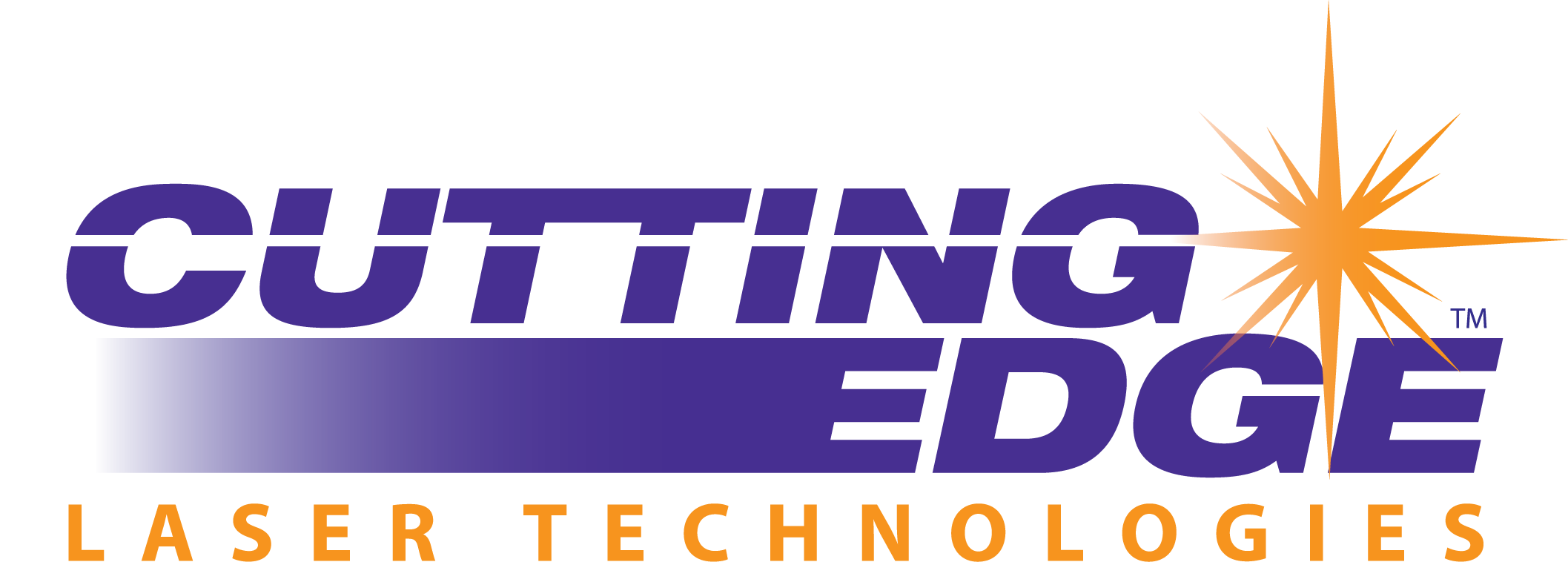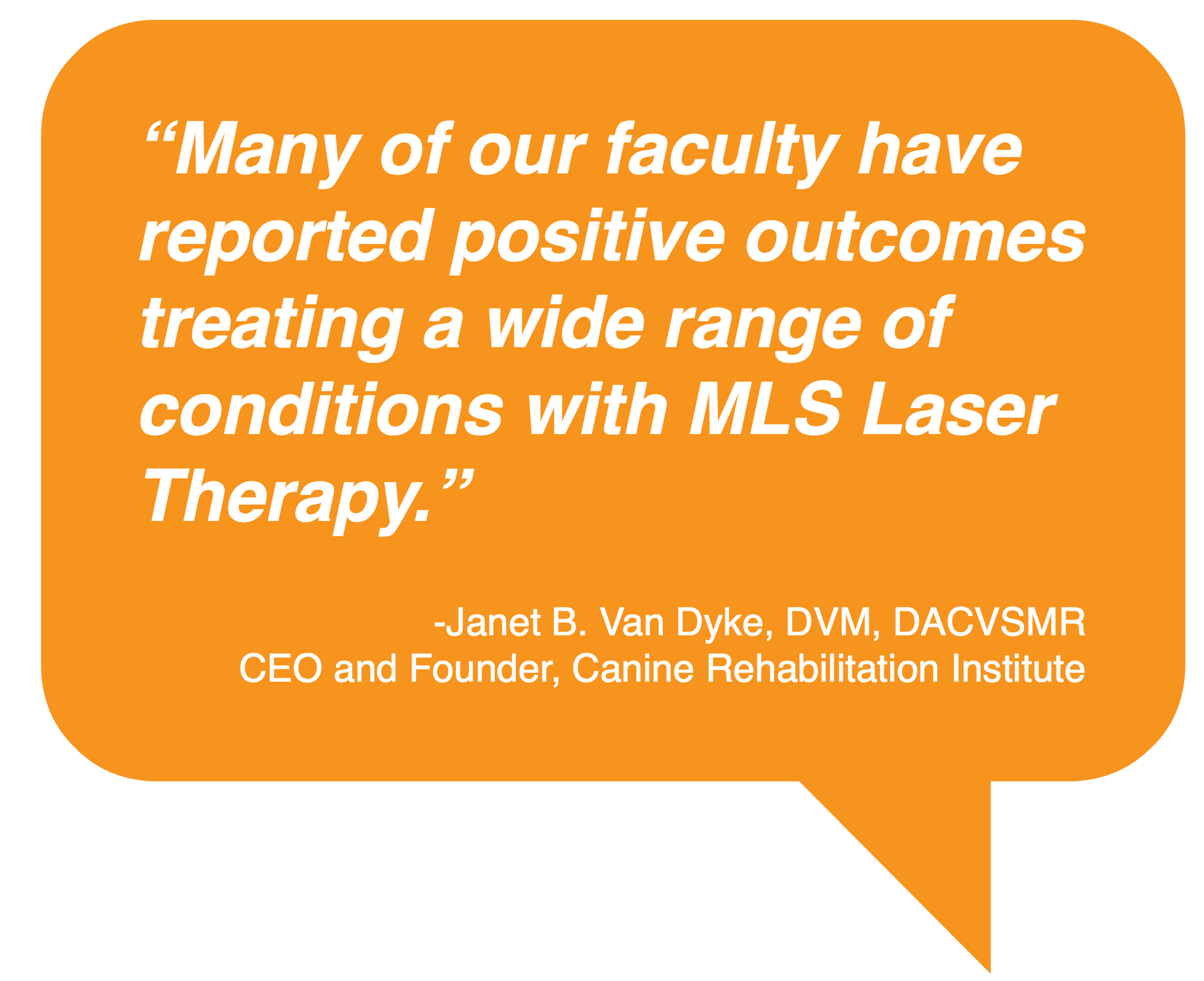Presented by Ellen Carozza, LVT at Nova Cat Clinic in Arlington, VA
Bree, a 2 YO female Maine Coon came into the clinic one week after the birth of a stillborn kitten. After the birth of the stillborn, the owner started Bree on Clavamox - shortly after however they noticed a sour smelling damp spot on Bree's bedding and immediately brought her in to Nova Cat Clinic on 6/9. Upon examination, Bree showed an extremely distended bladder that took up most of her abdominal space and x-rays of her uterus showed signs of pyometra.
Diagnosis: Pyometra, neurogenic bladder, metritis, abdominal mass
Lab & Diagnostics: Bloodwork indicated mild elevation in BUN: 42 with normal Crea: 1.3. Urinalysis showed the urine specific gravity of 1.050. Urinary infection present, either from bladder or uterus. Urine sample was not from a cystocentesis due to possibility of tearing the bladder. X-ray indicated an abnormally large urinary bladder, large uterus seen.
Initial Treatment Plan: Empty the bladder, administer pharmaceuticals, and acupuncture. Consult neurology for further information.
Revised Treatment Plan (after 5 days of no improvement with the initial treatment plan):
The medical team discussed using the laser for pain and inflammation with the lack of options to treat Bree after a conversation with owner about treating the Pudendal Nerve with laser therapy (to see if this was an inflammatory process due to the size of the litter and the size of the kittens) we started with the laser. Laser therapy was the only other option to treat Bree without pharmaceuticals so she didn't have to be removed from her kittens permanently. All medications we ceased as suggested by neurology and the clinic focused solely on laser therapy so no kittens would be affected. If there were no results in 24 hours the kittens would be removed and NSAIDs would be started.
Results: Successfully Treated! Bree was able to raise her kittens without pharmaceutical intervention and she was spayed in August.
X-Ray of Bree's Abdomen (before treatment, during and after):
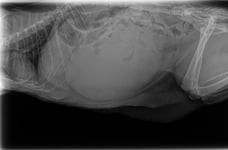
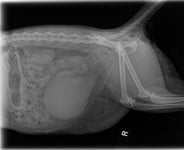
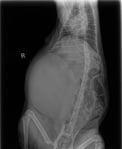
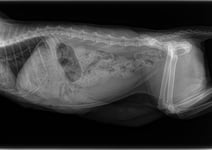
Status Update After Initial Treatment Options Failed: Bree's owner was very reluctant to remove the kittens from her to hand raise them. Her owner used Buprinex at home for pain management, but it did not seem to help and it made the kittens quite drowsy. The owner felt the medications prescribed by neurology were not showing any effect in treating her potential rule out list and declined all use of steroids or NSAIDS. After a lengthy discussion about Bree’s potty box habits, the owner revealed that Bree has no interest in urinating or defecating. This signaled that there was and inflammatory response going on and Bree's bladder and colon were not relaying to her brain that she had to urinate or defecate. With her other litters, Bree was normally a good mother to her babies, and a friendly cat, but at this point in time she began to become aggressive with the kittens - she no longer wanted to clean or nurse and would attack them. She was visibly in distress and traditional medicine was not helping her situation. This is when the treatment plan was revised.
Significant notes: On 6/16 Bree had her first laser session - within 20 minutes she urinated on her own for the first time in nearly two weeks and on 6/17 she began to defecate on her own. After each treatment she would urinate and defecate with ease. Within 24 hours Bree’s attitude changed, she became friendly again. She was not agitated, or nervous. She began to groom and care for her kittens like she has done in the past. Bree received daily laser treatments for 6 days. She has been urinating and defecating normally since the final treatment on 6/25.
Check out Bree & Ellen after her successful treatment:
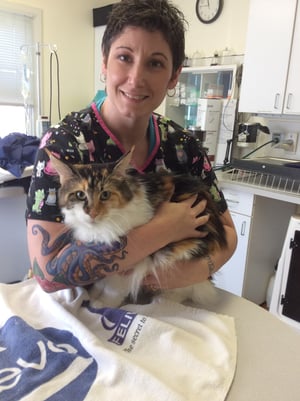
Interested in downloading the entire case study for review?
Looking for more? Here are some other case studies that might interest you: Treatment of Anal Sacculitis, Treatment of Paresis of the Hind Legs in River Otter, Treatment of MRSA Lesions in a Cat
